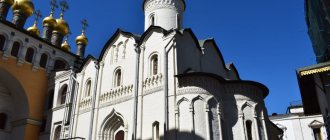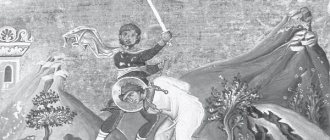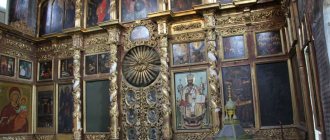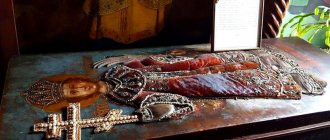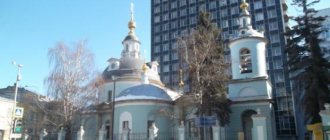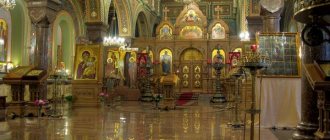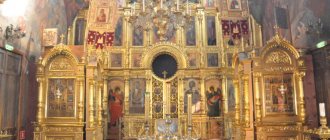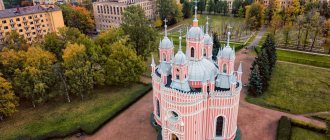Mir
Russia Moscow Church of St. Theodore Stratilates near Chistoprudny Boulevard (Moscow) Map is loading…
{"format":"leaflet","minzoom":false,"maxzoom":false,"limit":50,"offset":0,"link":"all","sort":[""], "order":[],"headers":"show","mainlabel":"","intro":"","outro":"","searchlabel":"\u2026 \u0441\u043b\u0435\ u0434\u0443\u044e\u0449\u0438\u0435 \u0440\u0435\u0437\u0443\u043b\u044c\u0442\u0430\u0442\u044b","default":"","import-annotation":false,"width ":"auto","height":"350px","centre":{"text":"","title":"""link":"""lat":55.76295400000000057616489357315003871917724609375,"lon": 37.639195000000000845830072648823261260986328125,"icon":""},"title":"","label":"","icon":"","lines":[],"polygons":[],"circles":[ ],"rectangles":[],"copycoords":false,"static":false,"zoom":8,"defzoom":14,"layers":["OpenStreetMap"],"image layers":[] ,"overlays":[],"resizable":false,"fullscreen":true,"scrollwheelzoom":true,"cluster":false,"clustermaxzoom":9,"clusterzoomonclick":true,"clustermaxradius":80, "clusterspiderfy":true,"geojson":"","clicktarget":"","showtitle":true,"hidenamespace":false,"template":"","userparam":"","activeicon": "","pagelabel":false,"ajaxcoordproperty":"","ajaxquery":"","locations":[{"text":"\u003Cb\u003E\u003Ca href=\"/palomnik/%D0% A6%D0%B5%D1%80%D0%BA%D0%BE%D0%B2%D1%8C_%D1%81%D0%B2%D1%8F%D1%82%D0%BE%D0%B3% D0%BE_%D0%A4%D0%B5%D0%BE%D0%B4%D0%BE%D1%80%D0%B0_%D0%A1%D1%82%D1%80%D0%B0%D1% 82%D0%B8%D0%BB%D0%B0%D1%82%D0%B0_%D0%B1%D0%BB%D0%B8%D0%B7_%D0%A7%D0%B8%D1%81% D1%82%D0%BE%D0%BF%D1%80%D1%83%D0%B4%D0%BD%D0%BE%D0%B3%D0%BE_%D0%B1%D1%83%D0% BB%D1%8C%D0%B2%D0%B0%D1%80%D0%B0_(%D0%9C%D0%BE%D1%81%D0%BA%D0%B2%D0%B0)\» title =\»\u0426\u0435\u0440\u043a\u043e\u0432\u044c \u0441\u0432\u044f\u0442\u043e\u0433\u043e \u0424\u0435\u043e\u0434\u043e\u044 0\u0430\u0421\u0442\ u0440\u0430\u0442\u0438\u043b\u0430\u0442\u0430 \u0431\u043b\u0438\u0437 \u0427\u0438\u0441\u0442\u043e\u043f\u0440\u0443\u0 434\u043d\u043e\u0433\u043e\ u0431\u0443\u043b\u044c\u0432\u0430\u0440\u0430 (\u041c\u043e\u0441\u043a\u0432\u0430)\»\u003E\u0426\u0435\u0440\u043a\u043e\ u0432\u044c\u0441\ u0432\u044f\u0442\u043e\u0433\u043e \u0424\u0435\u043e\u0434\u043e\u0440\u0430 \u0421\u0442\u0440\u0430\u0442\u0438\u043b\u0 430\u0442\u0430\u0431\u043b\ u0438\u0437 \u0427\u0438\u0441\u0442\u043e\u043f\u0440\u0443\u0434\u043d\u043e\u0433\u043e \u0431\u0443\u043b\u044c\u0432\u0 430\u0440\u0430 (\u041c\u043e \u0441\u043a\u0432\u0430)\u003C/a\u003E\u003C/b\u003E","title":"\u0426\u0435\u0440\u043a\u043e\u0432\u044c \u0441\u0432\u044f\u0 442 \u043e\u0433\u043e \u0424\u0435\u043e\u0434\u043e\u0440\u0430 \u0421\u0442\u0440\u0430\u0442\u0438\u043b\u0430\u0442\u0430 \u0431\u043b\u0438\u0437 \u0427 ( u041c\u043e\u0441\u043a\ u0432\u0430)","link":"","lat":55.76295400000000057616489357315003871917724609375,"lon":37.6391950000000008458300726488232612609863281 25,"icon":""}],,"imageLayers":[]}
55.762936; 37.639222
Russia, Moscow, Arkhangelsky lane, 15Ас2
Moscow
Russia
Telephone:
623-46-05
Church of the Holy Great Martyr Theodore Stratilates
- a small Moscow temple in the classicist style, located near Chistye Prudy. Along with the Church of the Archangel Gabriel (“Menshikov Tower”) it belongs to the courtyard of the Antiochian Orthodox Church.
History[edit]
The temple was erected at the turn of the 18th and 19th centuries as a winter (that is, heated, used in the cold season) church at the Church of the Archangel Gabriel. For a long time, the small church was called the post office church, as it was located next to the Moscow post office. The temple was not damaged in the war with Napoleon and in the great Moscow fire of 1812. According to eyewitnesses, French soldiers threw burning straw around him just for show. Initially, the temple was consecrated in honor of St. Theodore Tyrone; soon, with donations from the local postal director, a chapel of St. Theodore Stratilates was built in it. At the end of the 19th century, a chapel appeared in the temple in honor of the icon of the Mother of God “Unexpected Joy”, and the main altar was the altar dedicated to Theodore Stratelates. According to him, the temple received a new name.
Antioch courtyard in Moscow
Alleys wind between Myasnitskaya and Chistoprudny boulevards. They are the veins of Moscow and ideal routes for summer walks. In winter, the alleys are covered with snow, snow and pieces of ice fall from the roofs. The logical dominant of Krivokolenny Lane - the Church of the Archangel Gabriel with the Menshikov Tower, together with another - the strict church - Fyodor Stratilates - make up the Antioch courtyard. The courtyard of the Antioch courtyard is a quiet place. The caretaker's house and guardhouse. A cat that lives in the garage - that’s probably all.
Several houses built at the end of the 19th century separate the churches from the rather noisy Arkhangelsky Lane, which faces Chistoprudny Boulevard. For example, House No. 17 p.1. former orphanage of the Elizabethan Charitable Society. This house was built in 1892 according to the design of the architect Alexander Popov.
The first wooden church was erected on this site in 1551. A hundred years later, the temple in the name of the Archangel Gabriel became stone. But this one was built in 1707 by the architect I.P. Zarudny, commissioned by A.D. Menshikov. They say that Domenico Trezzini himself helped Ivan Zarudny with this temple, and it was built by groups of Italian and Swiss craftsmen from the cantons of Ticino and Friborg and Russian stonemasons from Kostroma and Yaroslavl.
Menshikov, a darling of fate and a maximalist, wanted the church that Peter Alekseevich himself commissioned him to build to become the tallest in Moscow. And he succeeded - the height of the bell tower with a spire, which is called the Menshikov Tower, is 81 meters. After restoration, somewhat less. The walls were decorated with white stone decoration, which was lost over time and today the decor of the church is only a copy, however, well executed in the middle of the last century, when the church was restored. It was closed from 1923 to 1947. In the 1960s, a 19th-century iconostasis from the destroyed Church of Peter and Paul in Preobrazhenskaya Sloboda was installed in the church. The original one is located in the Assumption Church of Makhachkala. This temple has a difficult fate - in 1723, during a thunderstorm, the spire of the church - Menshikov's pride - was struck by a thunderstorm, and the oak structures of the upper tier caught fire. No matter how hard the parishioners and soldiers of the Preobrazhensky and Semyonovsky Guards regiments tried to extinguish the fire, they could not save it. The building stood abandoned for about half a century. Until the Moscow Freemasons became interested in him, one of them, G.Z. Izmailov restored it and since 1773 the temple has become a meeting place. The Orthodox Church returned the church in 1863. Then, by order of St. Philaret, Metropolitan of Moscow, numerous Masonic symbols and sayings were erased from the walls of the temple. They say that Menshikov built such a high tower at the urgent request of Peter the Great, who used it to receive alarm signals from the German Settlement, which was then threatened by the Streltsy. In order to quickly pacify possible unrest with the forces of the Lefortovo regiment, it was necessary in the Kremlin to receive a signal about this, which the tower would have to provide. In Moscow they said that through the tower the Kremlin was communicating with Kukui - the German settlement. Next to the bright Temple of the Archangel Gabriel is its discreet contemporary, built in 1782-1806, the Temple of the Great Martyr Theodore Stratelates. Built according to the design of the architect Egorov, as a warm temple. In 1860-1869, a northern chapel was built to it in the name of the icon of the Mother of God “Unexpected Joy”. It was closed in the 1930s, and in 1947 the courtyard of the Antiochian Patriarchate was located in these churches and services were resumed. The Russian and Antiochian (Syrian) Apostolic Churches are linked by long-standing spiritual ties: some historians believe that the first Metropolitan of Kiev, St. Michael, was a Syrian. And in 1655, His Beatitude Patriarch Macarius was a guest of the Russian Church. And already in the 19th century, the Moscow church in honor of the Ascension of the Lord and the Hieromartyr Hypatius, Bishop of Gangra, was transferred to the Antioch metochion. In 1913, His Beatitude Patriarch Gregory IV of Antioch visited Russia. In 1879, when Archimandrite Christopher arrived from Syria to Moscow to manage the courtyard. He did not have money to equip his yard. Metropolitan Macarius of Moscow gave them - 20 thousand rubles - to the brothers. With this money, Archimandrite Christopher built stone houses at the courtyard and “acquired a considerable amount of sacred vestments and church utensils for the Syrian churches,” notes the magazine of the Moscow Patriarchate for June 1954. In addition, several students arrived from Syria and were sent to Russian theological schools. In Arkhangelsky Lane the Antiochian Compound since July 1948. Archimandrite Vasily Samakha was appointed the first rector. The current rector of the churches of the Archangel Gabriel and the Great Martyr Theodore Stratilates is Bishop Niphon (Saikali) of Philippopolis. During the years of the USSR, the Antioch courtyard was the only place in Moscow where baptisms and weddings took place without requiring a passport. Parishioners still remember this. Which, after seeing several photos from the courtyard, reminded me of this. “This is the most peaceful place in Moscow,” one interlocutor told me. “We came there for services and were baptized there into the Orthodox faith with the whole family without a passport.”
MOSCOW COMPOSITION OF THE ANTIOCHEAN ORTHODOX CHURCH
Antiochian metochion in Russia, representation of the Patriarch of Antioch to the Russian Orthodox Church
- Address: Russia, 101000, Moscow, Arkhangelsky lane, 15a
- Tel.
- On the map: Yandex.Map, Google map
Placed in Moscow on Chistye Prudy, in the churches of Gabriel the Archangel and Theodore Stratilates.
At the Ascension-Ipatievskaya Church
Patriarch Methodius of Antioch sent Metropolitan Neophytos of Iliopolis to Moscow in 1842 to collect offerings with a message in which he described the disastrous state of the Antioch Church, which suffered from Turkish oppression and Catholic propaganda. The message of Patriarch Methodius, published in the brochure “The Church of Antioch,” met with a warm response in church circles in Russia. Soon, Saint Philaret of Moscow obtained permission from the Holy Synod to transfer the Ascension-Ipatievsky assigned church in Moscow to the jurisdiction of the Patriarchal Throne of Antioch. As can be seen from the decree of the Synod, the above-mentioned church with all its utensils and church land was made an Antiochian metochion so that the funds it acquired would go to spiritual and educational work among the clergy and flock of the Antioch Patriarchate.
The metochion was granted to the Patriarchal See of Antioch in December 1848. From the same year, its first rector, Metropolitan Neophyte of Iliopolis, began to serve here. In the 1880s, during the abbotship of Archimandrite Christopher, who decided to increase the income of the monastery by building houses, the monastery received a loan from the Moscow Ecclesiastical Consistory from the sums of the Perervinsky Monastery in the amount of twenty thousand rubles. With this money, Archimandrite Christopher built stone houses at the courtyard and purchased many vestments and church utensils for the Syrian churches.
In addition to collecting donations, the metochion served as an important channel of communication between the hierarchy of the Antiochian Church and the Russian Church. Appeals and publications by the abbots of the metochion notified the Russian church society about the life of the Antiochian Patriarchate. The metochion also sent Arab students to theological schools of the Russian Church. Among the most notable abbots of the metochion during the Synodal period are St. Raphael (Avavini), the first Arab Orthodox archpastor of America; future Patriarch Alexander (Takhan); friend and confessor of Righteous John of Kronstadt, Bishop Ignatius (Aburus).
In 1929, the activities of the Antioch metochion under the Russian Orthodox Church were interrupted.
At Chistye Prudy
In 1945, it was decided to resume the activities of the Antioch Metochion in Moscow. At the beginning of 1948, with the blessing of the Patriarch of Moscow and All Rus' Alexy I, the courtyard of the Antiochian Patriarchate was located in the churches of the Archangel Gabriel and Theodore Stratilates on Chistye Prudy. The official opening of the courtyard followed on July 17 of the same year. During the Soviet period, the metochion was the only Orthodox parish in the capital, where baptisms and weddings were performed without requiring a passport or official registration of the Sacraments with the authorities. At that time, the only church children's choir in Moscow existed here, and the first Sunday school was opened.
If during the Soviet period the parish of the metochion consisted almost entirely of local Russian believers, then after the fall of the USSR a small Arab community also formed. The service was conducted in Church Slavonic and followed the customs of the Russian Church, but some customs characteristic of the Church of Antioch also took root: a children's religious procession on Palm Sunday; the rite of Burial on Good Friday, during which part of the prayers are sung in Arabic, etc.
The church was built according to the design of Ivan Zarudny
Ivan Petrovich Zarudny, a famous Moscow architect, became the organizer of design and construction work. Domenico Trezzini was appointed "Architectural Chief".
In addition, Italian and Swiss architects, sculptors and Russian skilled carvers and masons from Kostroma and Yaroslavl were invited to help.
Church of the Archangel Gabriel (Menshikov Tower). Initial view. Reconstruction by K. Lopyalo
The church on Chistye Prudy was built on a large scale and with great care. Alexander Danilovich spared no expense on the construction.
The tower was 3.2 meters higher than the Church of Ivan the Great.
81 meters
The Menshikov Tower on Chistye Prudy became the tallest building in Moscow in the 18th century
The thirty-meter spire with a golden angel that completes the bell tower has become a special sign of the Menshikov Tower.
For those years, the design of the temple was unique: the walls of the church were covered with numerous ornaments, skillfully carved bouquets, vases, and fruits.
It was an architectural style oriented towards Western models, where the interweaving of European and Russian architectural elements was organically reflected in new ideas.
The Menshikov Tower was one of the earliest buildings in Moscow built in the Baroque style.
In 1708, Menshikov installed a chiming clock on the tower of the church. He bought them in London for a lot of money. They struck every quarter of an hour, and the 50 bells rang at noon for a full half hour.
In 1710, Menshikov was appointed the first governor of St. Petersburg. Having left the city, he took many craftsmen with him and a year later began construction of the Orainienbaum Palace, abandoning work on the church.
Zarudny repeatedly informed Menshikov in writing about the slow destruction of the temple and the need to continue construction. However, there was no response from the prince. Soon his private holdings in the church were converted into the territory of Sergius of Radonezh.
In 1704, by order of Alexander Menshikov, construction of the Church began
At the very end of the 17th century, Prince Menshikov, having bought land in Myasniki north of the temple, built a vast estate on the site of the current Main Post Office. He also began landscaping the surrounding area.
By his order, the Poganye Ponds were completely cleaned, and henceforth it was forbidden to dump waste into the pond. They have since been renamed Pure.
Prince Alexander Danilovich Menshikov. By his order, the Church of St. Archangel Gabriel was rebuilt in the “Petrine Baroque” style
Having acquired a new property, the prince became a parishioner of the ancient church. For his family, it became the house church at the Moscow palace.
1704
this year the wooden church was demolished and a new building began to be erected in its place
At the beginning of the 18th century, Menshikov decided to rebuild the temple in a new style. In 1704, on his orders, the wooden church was demolished and a new building began to be erected in its place.
There is an opinion that the wayward Menshikov wanted to offend Muscovites - to build a structure higher and more beautiful than the Church of Ivan the Great.
Myasnitskaya street. On the left is the Church of the Archangel Gabriel, XVIII century.
According to one version, Alexander Danilovich needed a new stone church to build a chapel for the miraculous icon.
According to legend, the Image of the Polotsk Mother of God, painted by the Evangelist Luke himself, was brought by Menshikov from Polotsk. In 1706, the Vvedensky chapel was built in the temple where the ancient icon was placed.
Krivokolenny Lane and surrounding area
And in addition to the story about the Menshikov Tower - several photographs of Krivokolenny Lane and its surroundings. Many ancient estates and apartment buildings from the late 19th and early 20th centuries have been preserved here.
Krivokolenny Lane
Balcony in an old house
Potapovsky Lane
Directions
Address: Moscow, Arkhangelsky lane, 15Ac9.
© Website “On the Roads of the Middle Way”, 2009-2021. Copying and reprinting of any materials and photographs from the site anashina.com in electronic publications and printed publications is prohibited.
